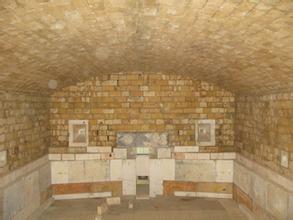
Product List
Success Case
Contact Us
- 0086 371 63838939
- 0086 371 63835539
- sales@sunriserefr.com
- tkfanyi
- No.36 Fengchan Road, Zhengzhou City

News
Cold Repair for Glass Furnaces
- More related products
- Fused Cast AZS
- Fused Cast Alumina Block
- Fused Cast High Zirconia Block
- Fused Cast Skid Rail Block
Glass furnaces are the key equipment for glass factories. When glass furnaces have reached the designed service life or are damaged too severely that hot repair cannot maintain the safe production, furnaces should be down for cold repair.

In the late campaign of glass furnaces, some parts may become weak and have the risk of collapsing. The energy consumption becomes high, the quality of glass becomes poor and the benefits decrease. In this situation, cold repair is required.
The reasons for cold repair include: 1) refractories are damaged severely and there is a risk of leakage and partial hot repair is difficult to be carried on; 2) refractories of the superstructure are damaged severely and cause serious leakage of fire and hot repair does not work; 3) regenerators are clogged seriously, resulting in the increase of fuel consumption and cost, but changing the checker work bricks is uneconomical.
Of course, there are other special reasons for the shutdown and cold repair of furnaces, such as improper design and wrong selection of refractories.
The easiest cold repair is changing the throat brick, sidewall brick and checker brick. Middle-scale cold repair also includes the reconstruction of the tank bottom, port and crown. For large-scale cold repair, the whole structure of the furnace, except the foundation and fuel, will be demolished and repaired. In general, cold repair is not just a repair as it is but also combines the technological transformation.
The main purposes of cold repair of glass furnace are to increase melting capacity, improve melting quality, save energy and reduce consumption, and prolong the furnace campaign. For each purpose above there are several corresponding improving steps. Among them some steps are effective for a specified purpose and some may be effective for multiple purposes.
Generally, cold repair includes five steps: 1) discharge the glass water, 2) cool the furnace, 3) demolish the severely burned parts, 4) reconstruct the demolished parts, and 5) heat up the furnace and recover the production.
General cold repair requires protective demolishing, slow cooling and no water cooling for the reserved parts. When demolishing the checker works, measurements should be taken to protect the rider arch.
When removing large steel structure, take effective measures protect materials reused in the adjacent parts to avoid excessive demolishing.
The upper wall of the regenerator can be demolished or not according to the erosion situation. Minimize the height difference between the old and new wall to avoid uneven expansion.
After cooling the furnace, there will be a gap in the tank neck due to shrinkage. The gap is usually 60-100mm and sometimes may even pull off the bottom and sidewall bricks. So, spare bricks should be prepared for this part.
Since there are a variety of refractories used in the glass furnace and each has different processing cycle, the prepare work for cold repair should be started six months in advance.
Cold repair is different from reconstruction. For cold repair, it is necessary to consider the relationship between the reconstructed parts and reserved parts. If the demolished parts are too large, this may delay the construction; if the demolished parts are too small, it is very difficult to ensure the match of the service life of the overall materials and the spare materials may be wasted. Thus, cold repair should be taken seriously.
- Read more
- The Application Of Fused Cast AZS Block In The Sidewall Of Glass Furnaces
- Refractory Selection for Oxy-Fuel Glass Furnaces
- How To Prolong The Service Life Of Glass Furnace
- Forehearth Types And Refractory Selection for The Glass Furnace
- Refractory Selection And Repair Of The Glass Furnace Bottom
Leave Message
For more information on any of our products please get in touch using the form below. One of our sales team will respond to your enquiry as soon as possible.

Copyright © 2014 Zhengzhou Sunrise Refractory Co., Ltd. 豫ICP备13002126号












